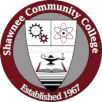 Policy
Policy
Policy Type: Board- Strategic Outcomes
Responsible: President
Related Policies: B1002
Linked Operating Standards: None
Related Laws: None
Related External Standards: None
HLC Criterion: 2B2B
The institution presents itself accurately and completely to students and the public with respect to its educational programs and any claims it makes related to the educational experience.
, 3A3A
The institution maintains learning goals and outcomes that reflect a level of rigor commensurate with college-level work, including by program level and the content of each of its educational programs.
, 3B3B The institution’s educational programs engage students in collecting, analyzing and communicating information; in practicing modes of intellectual inquiry or creative work; and in developing skills adaptable to changing environments., 3E3E The institution provides student support services that address the needs of its student populations, as well as the teaching resources and infrastructure necessary for student success., 3F3F The institution improves its curriculum based on periodic program review., 3G3G The institution’s student success outcomes demonstrate continuous improvement, taking into account the student populations it serves and benchmarks that reference peer institutions., 4B4B
The institution’s financial and personnel resources effectively support its current operations. The institution’s financial management balances short-term needs with long-term commitments and ensures its ongoing sustainability.
Monitoring Reports
Policy Statement
As identified in the College purpose statement, college readiness (developmental) programming is an essential service that prepares students with basic academic skills needed to succeed in college-level study.
Students benefit from courses, programs, and services that develop attitudes, behaviors, and strategies needed to facilitate success in their academic pursuits. Students benefit from services that help them identify, select, and utilize various college resources that will assist them with academic success. Students benefit from courses that help them close academic achievement gaps that prepare them for success in college-level work. Students receive greater benefit when they can navigate through college readiness courses and sequences as quickly as possible.
The College benefits when students successfully transition into and successfully complete college-level coursework as soon as possible.
The Community benefits when students have options that allow them to access academic pathways that are otherwise unavailable.
To achieve these benefits, the Board directs the President to establish, deliver, and continuously improve college readiness programming.
Key Monitoring Activities:
As it relates to the key performance areas noted in the Monitoring College Effectiveness policy, the Board is interested in enrollment, academic readiness, academic progress, academic success, completion, and deployment.
The measures and indicators suggested below are advisory in nature and are intended to provide the President with a broad range of ideas as to what the Board might find helpful as it monitors the College’s progress on the key performance areas for this Strategic Outcome. The President, at his/her discretion, can modify the measures and indicators as needed.
Specific measures for enrollment may include data that reflects credit-hours, FTE, and headcount of students taking college readiness courses. Data aggregated by student demographic profiles is appropriate. Potential indicators might identify the average credit load by semester and/or average credits earned by semester for college readiness students.
Specific measures for academic readiness may include data that describes student performance on placement exam scores, student placement into developmental education courses, student participation in developmental education courses, and success rates. Potential indicators might identify: the average placement rate of developmental students; the number of students placing into developmental education; the number of students taking at least one developmental education course; the number of students taking the full developmental sequence; the number of developmental education writing students who complete with a C or better; the number of developmental education reading students that complete with a C or better; and the number of developmental education math students that complete with a C or better.
Specific measures for academic progress may include data that reflects course completion, credit accumulation rate, retention, and persistence. Potential indicators might identify: the percent of courses completed that were attempted; the average length of time it takes students to complete their developmental sequence; and percentage of students who completed credit milestones within an academic year.
Specific measures for academic success may include data that reflects student learning outcome attainment and student performance in developmental education courses. Potential indicators might identify the percentage of developmental writing students completing a college-level writing course with a C or better within four semesters after completing last developmental writing course and the percentage of developmental math students completing a college-level math course with a C or better within four semesters after completing last developmental math course.
Specific measures for completion may include data that describes student graduation rates, completion rates, and credentials awarded. Potential indicators might describe the percentage of degree-seeking students who complete college readiness programming and graduated within three (3) years of initial enrollment at SCC and/or the number of certificates and degrees awarded to students who have completed college readiness programming.
Specific measures for deployment may include data in the measures of curriculum management and scheduling effectiveness, including breadth of courses, percentage of courses offered in multiple timeframes/formats, number of students who access courses from off-campus locations, the average number of sections per course, average enrollment per course, and average enrollment per section.
| Change Log | Governance Unit: Board of Trustees |
| Date | Description of Change |
| 03-07-22 | Initial Adoption |
| 11-07-22 | Added Deployment Measure |
| 10-19-23 | Board Reviewed, No Changes |
| 10-17-24 | Board Reviewed, No Changes |
| 05-15-25 | Board Reviewed, No Changes |
| 08-21-25 | Board Reviewed, Minor Grammatical & Punctuation Changes; HLC Criterion Updated |
